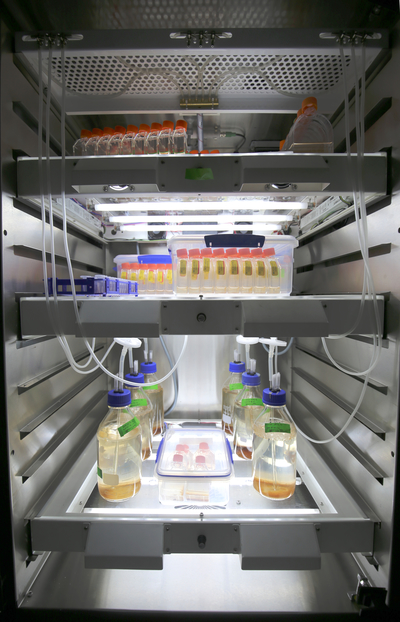Heat-resistant coral developed to fight bleaching

Scientists from CSIRO, the Australian Institute of Marine Science (AIMS) and the University of Melbourne have successfully produced a coral that is more resistant to increased seawater temperatures in a laboratory setting. Corals with increased heat tolerance have the potential to reduce the impact of reef bleaching from marine heatwaves, which are becoming more common under climate change.
“Coral reefs are in decline worldwide,” said CSIRO Synthetic Biology Future Science Platform (SynBio FSP) science lead Dr Patrick Buerger. “Climate change has reduced coral cover, and surviving corals are under increasing pressure as water temperatures rise and the frequency and severity of coral bleaching events increase.”
The team made the coral more tolerant to temperature-induced bleaching by bolstering the heat tolerance of its microalgal symbionts — tiny cells of algae that live inside the coral tissue. Dr Buerger explained, “Our novel approach strengthens the heat resistance of coral by manipulating its microalgae, which is a key factor in the coral’s heat tolerance.”

The team isolated the microalgae from coral and cultured them in the specialist symbiont lab at AIMS. Using a technique called ‘directed evolution’, they exposed the cultured microalgae to increasingly warmer temperatures over a period of four years. This assisted them to adapt and survive hotter conditions.
“Once the microalgae were reintroduced into coral larvae, the newly established coral–algal symbiosis was more heat tolerant compared to the original one,” Dr Buerger said. The microalgae were exposed to temperatures that are comparable to the ocean temperatures during current summer marine heatwaves causing coral bleaching on the Great Barrier Reef.

The researchers then unveiled some of the mechanisms responsible for the enhanced coral bleaching tolerance.
“We found that the heat-tolerant microalgae are better at photosynthesis and improve the heat response of the coral animal,” said Professor Madeleine van Oppen, of AIMS and the University of Melbourne. “These exciting findings show that the microalgae and the coral are in direct communication with each other.”
The next step is to further test the algal strains in adult colonies across a range of coral species.
Please follow us and share on Twitter and Facebook. You can also subscribe for FREE to our weekly newsletters and bimonthly magazine.
Babies of stressed mothers likely to get their teeth earlier
Maternal stress during pregnancy can speed up the timing of teeth eruption, which may be an early...
Customised immune cells used to fight brain cancer
Researchers have developed CAR-T cells — ie, genetically modified immune cells manufactured...
Elevated blood protein levels predict mortality
Proteins that play key roles in the development of diseases such as cancer and inflammation may...





